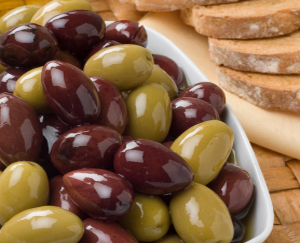Gluten Free
What does following a gluten-free diet mean? That you're embarking on an easy diet with a wide range of health-promoting effects. Instead of dwelling on what you’re giving up, consider that you’re going to enjoy a whole new world of delicious food options to meet your special dietary needs. You’ll be eating seasonally, choosing more fresh fruits and vegetables, focusing on meats, seafood, poultry, legumes, lentils, corn, and rice, and discovering fascinating ancient grains such as quinoa, amaranth, and millet. You’ll be able to eat potatoes, eggs, most cheeses, even chocolate (!)—and enjoy them without guilt because you’ll be taking good care of your body. In fact, you’ll probably end up eating—and feeling—better than ever!
Visit this page for more information about living Gluten Free
---
We carry a large variety of gluten free items, the brands listed below represent just some of the offerings we carry












Raw Foods
“Raw” is all the rage these days, but what does it mean to eat raw? And is it possible to get enough protein and other nutrients while following a raw diet?
Raw foods are those that have not been heated above 108°F to 118°F
Raw, defined
Most raw foodists eat only plant-based (vegan) foods, including vegetables, fruits, nuts, seeds, legumes, and seaweed. Raw foods are those that have not been heated above 108°F to 118°F, depending on who you talk to. The logic behind this is that many of the nutrients in foods are extremely sensitive to heat. This is especially true of the water-soluble vitamins, like the B-vitamins, folate, and vitamin C. As Katie McDonald, a raw food chef and certified Holistic Health Coach in Rhode Island puts it, “The more you do to a food, the less it does for you.”
Raw food advocates also look to the enzyme content of raw foods, saying that cooking destroys delicate enzymes that could otherwise go toward improving the digestion of the foods you’re eating.
---
In addition to our always fresh produce, we carry many more raw foods throughout our stores. Look for these brands and our Raw Foods section for more.



More Diets

Related Topics
- By Suzanne Dixon, MPH, MS, RD
Never Too Late to Master the Mediterranean Diet
Health experts have been touting the Mediterranean diet’s heart healthy benefits for years. What if you already have heart disease or have had a heart attack? Is it ever too late to benefit from going Mediterranean? Fortunately, no!
Is it ever too late to benefit from going Mediterranean? No!
Measuring diet details
Researchers enrolled 1,000 people into a study on diet and heart disease at the time they were admitted to the hospital for acute coronary syndrome (symptoms indicating a heart attack or chest pain caused when coronary artery disease prevents sufficient blood supply to the heart). Of the 1,000 participants, 459 had left ventricular systolic dysfunction, which is an indication of more severe heart disease.
The researchers gathered diet and lifestyle information within three days of each person’s hospital admittance. Each person received a diet score based on how closely he or she followed a Mediterranean diet, defined as eating mostly whole grains, fruit and nuts, vegetables, olive oil, nonfat or low-fat dairy products, fish, potatoes, legumes (beans and peas), and moderate alcohol use (approximately 2 drinks per day). The more closely a person followed a Mediterranean diet, the higher his or her dietary score.
Mediterranean fare feeds a healthier heart
People with the highest Mediterranean diet scores had 7% lower likelihood of developing left ventricular systolic dysfunction compared with those with the lowest diet scores. During the two years of follow-up, those with a high Mediterranean diet score were 12% less likely to experience additional heart disease events, such as a heart attack, compared with those with a low Mediterranean diet score.
This study does not prove cause and effect but it does suggest that even with existing heart disease, eating a Mediterranean diet may protect the heart from further damage. Not only are there no known downsides to going Mediterranean, this type of eating pattern also may protect against declining brain function with age (dementia) and some types of cancer.
How to eat Mediterranean style
To keep your ticker in tip-top shape, up the Mediterranean fare.
- Snack on fruit and nuts. Try an apple with nut butter or a handful of walnuts and raisins.
- Opt for olive oil. Cook with olive oil and enjoy homemade olive oil-based dressing on your salads and raw veggies.
- Fish for health. Try fish a few times a week instead of red meat. When you do eat red meat, keep it to no more than 3-ounces at a time, no more than 1-2 times per week.
- Love your legumes. Add more beans, peas, and chickpeas. Snack on humus and raw veggies, sprinkle kidney beans on salads and pasta, and put bean burritos and bean-based chili on your weekly menu plan.
- Do dairy right. Stick to low-fat and no-fat dairy such as low-fat yogurt and skim milk. You can even replace mayo and sour cream with thick, Greek-style plain yogurt.
- Keep grains whole. Try oatmeal for breakfast and quinoa or brown rice for dinner.
- Enjoy alcohol…moderately. Have no more than one drink per day for women and two per day for men. A drink is 12 ounces of beer, 5 ounces of wine, or 1 ½ ounces of hard liquor.
(Am J Clin Nutr; e-pub ahead of print July 2010)











